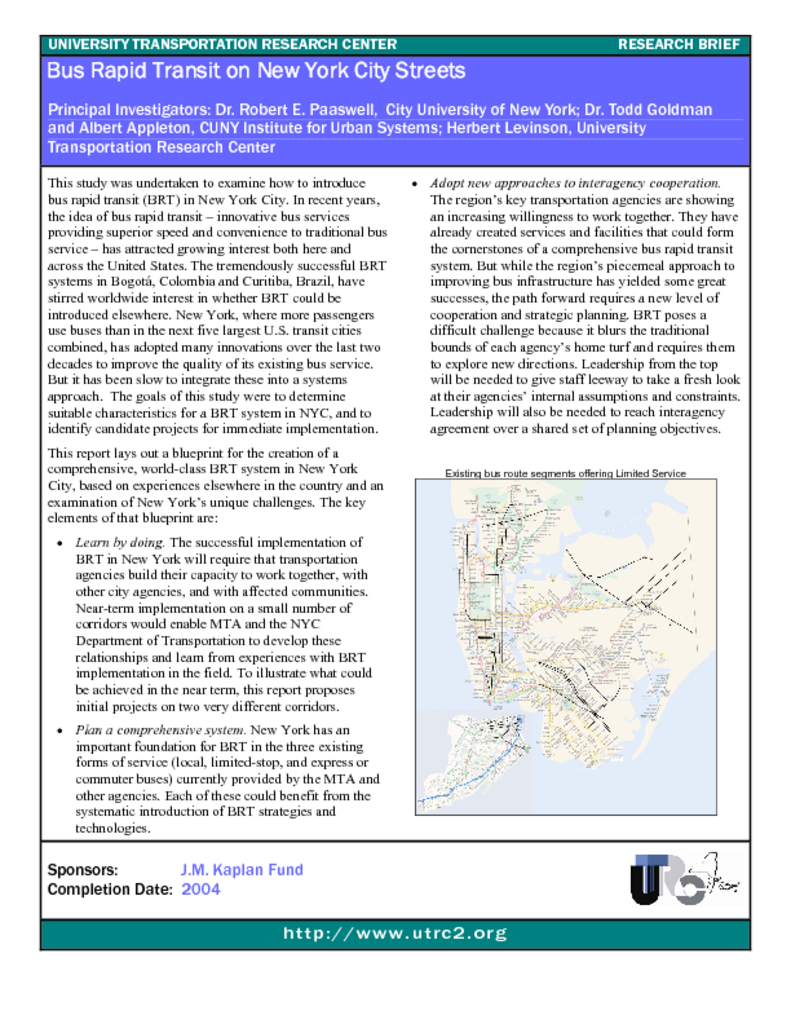<p>This study was undertaken to examine how to introduce bus rapid transit (BRT) in New York City. In recent years, the idea of bus rapid transit ? innovative bus services providing superior speed and convenience to traditional bus service ? has attracted growing interest both here and across the United States. The tremendously successful BRT systems in Bogotÿ, Colombia and Curitiba, Brazil, have stirred worldwide interest in whether BRT could be introduced elsewhere. New York, where more passengers use buses than in the next five largest U.S. transit cities combined, has adopted many innovations over the last two decades to improve the quality of its existing bus service. But it has been slow to integrate these into a systems approach. The goals of this study were to determine suitable characteristics for a BRT system in NYC, and to identify candidate projects for immediate implementation. This report lays out a blueprint for the creation of a comprehensive, world-class BRT system in New York City, based on experiences elsewhere in the country and an examination of New York?s unique challenges. The key elements of that blueprint are: ? Learn by doing. The successful implementation of BRT in New York will require that transportation agencies build their capacity to work together, with other city agencies, and with affected communities. Near-term implementation on a small number of corridors would enable MTA and the NYC Department of Transportation to develop these relationships and learn from experiences with BRT implementation in the field. To illustrate what could be achieved in the near term, this report proposes initial projects on two very different corridors. ? Plan a comprehensive system. New York has an important foundation for BRT in the three existing forms of service (local, limited-stop, and express or commuter buses) currently provided by the MTA and other agencies. Each of these could benefit from the systematic introduction of BRT strategies and technologies. ? Adopt new approaches to interagency cooperation. The region?s key transportation agencies are showing an increasing willingness to work together. They have already created services and facilities that could form the cornerstones of a comprehensive bus rapid transit system. But while the region?s piecemeal approach to improving bus infrastructure has yielded some great successes, the path forward requires a new level of cooperation and strategic planning. BRT poses a difficult challenge because it blurs the traditional bounds of each agency?s home turf and requires them to explore new directions. Leadership from the top will be needed to give staff leeway to take a fresh look at their agencies? internal assumptions and constraints. Leadership will also be needed to reach interagency agreement over a shared set of planning objectives.</p>




